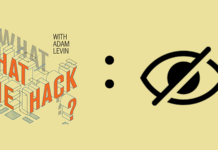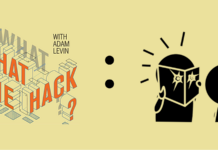

If you’re someone who cares about your privacy, these are indeed strange times. When everything from your iPhone to your iPad (and every derivation in between) is secretly tracking your every move from behind its colorful screen, when advertisers gather enough information about you to know you’re pregnant even before your parents do, it’s clear that we are living in a twilight zone. What we think we know about staying safe, and what we actually know, may be two entirely different things.
The recent kerfuffle over Apple device identification numbers is the perfect case in point. Last week the hacking group AntiSec announced that it had succeeded in stealing 12 million Apple device IDs from a laptop belonging to an FBI agent. To prove it, AntiSec released a million of the IDs (which they encrypted) on a publicly available website. The group even posted a tweet taunting Christopher Stangl, the FBI agent alleged to be the victim of the hack, thanking him for the vast cache of data.
Then things got really weird.
First, the FBI posted a press release on its website that denied even possessing Apple device IDs in the first place. The Bureau was even more adamant in its Twitter feed, saying, “We never had info in question. Bottom Line: TOTALLY FALSE.”
Next, Apple released a statement denying any involvement. “The FBI has not requested this information from Apple, nor have we provided it to the FBI or any organization,” Apple told CNN.
Not to be outdone, on Monday, a Florida firm, Blue Toad announced that the purloined database had actually been lifted from its files. Blue Toad is a digital publishing company that converts files to enable easier reading online and by mobile devices.
Regardless of the official denials, the device IDs certainly appear to be authentic, says Eduard Goodman, chief privacy officer at Identity Theft 911. So one thing is clear, somehow someone got their hands on a whole lot of information.
But AntiSec was adamant: The data came from the FBI. And unlike the vague denials from the government and Apple, AntiSec is very specific about how they pulled it off.
“During the second week of March 2012, a Dell Vostro notebook, used by Supervisor Special Agent Christopher K. Stangl from FBI Regional Cyber Action Team and New York FBI Office Evidence Response Team was breached using the AtomicReferenceArray vulnerability on Java,” according to AntiSec’s online post, which goes on to post the exact file name from Stangl’s computer and the exact number of records stolen: 12,367,232. (If you’re wondering how to keep your iPhone secure, you’ll want to read this.)
I don’t know about you, but all of this sure feels pretty creepy to me.
So as you put your head on your pillow tonight, riddle me this:
- Who should we believe?
- Is Blue Toad taking the proverbial bullet for someone else?
- If AntiSec is on the level, why is the FBI gathering this data anyway?
- How big a risk does this present to our privacy and identities, really?
Answering the first question lands us in a thorny nettle. We know the FBI has had issues in the recent past regarding the collection of way too much information about private individuals, sometimes illegally, and then being, shall we say, less-than-forthcoming with the truth about that surveillance. In 2007, 2008 and again in 2010, the Justice Department’s inspector general issued reports finding that the FBI illegally spied on American citizens by using false statements in National Security Letters to obtain consumers’ telephone records, in violation of the Electronic Communications Privacy Act. Once it had illegally obtained rafts of data about private citizens, who themselves were not suspects in any criminal investigation, the FBI tried to “cover” itself using “after-the-fact” security letters that “were legally flawed,” the inspector general found.
I’m not saying that the FBI is not being straight when it says it never obtained Apple device IDs, since no evidence exists to support that claim. But if on some future day the Justice Department’s Inspector General discovers that Hoover’s boys actually were collecting such data, I will be the one playing the role of Captain Renault from Casablanca, protesting a little too loudly that I am “Shocked! Shocked!” by this wholly unexpected revelation of wrongdoing.
Next there’s Apple. We know even less about the Cupertino, Calif.-based company than we do about the FBI, and that is at least partially by design, since Apple is famous as much for its zealously guarded secrecy as it is for its beautifully-designed devices. Stories abound of Steve Jobs firing employees for leaking details about upcoming products, and the company is famous for the Heisman-like stiff arm it throws at reporters. Jobs once went so far as to tell a journalism student to bugger off, stating in an email, “Our goals do not include helping you get a good grade,” and “Please leave us alone.”
If Apple actually did hand over 12 million device IDs to the FBI, it doesn’t enhance their public image to admit it.
There is AntiSec. The data they’ve unearthed certainly looks authentic. But when it came time to describe how they pulled off their caper, the members of AntiSec included a bizarre request: They said they would talk to journalists, but only after Adrian Chen, a tech writer for Gawker.com, posted a picture of himself wearing a tutu with a shoe on his head. So, “No tutu, no sources.”
I kid you not. Here’s the photo, though it now appears that Gawker does not believe that an FBI laptop was hacked. I can understand their skepticism given the whole tutu affair, but the truth is that we really can’t be sure who did this.
Here’s what we do know: A large breach just happened that might (I stress the word might) endanger the privacy and identity of millions of people. And someone — the FBI, Apple, Blue Toad or AntiSec — is not on the level here.
From this flows the second bizarre thing about this whole fiasco. The stolen file also contained users’ names, addresses and cell phone numbers, according to AntiSec. If the FBI is being less than truthful about its role in this breach, what was it doing with all that data the first place? Were these 12.3 million people under active investigation for terrorism or other crimes? Or was their data obtained as part of the mother of all fishing expeditions, without any grounds for suspicion whatsoever, as happened in the FBI’s previous phone surveillance program, according to the Inspector General’s investigation. At this moment, your guess is as good as mine.
Finally, there’s the mystery of whether or not this breach is actually a big deal. My gut tells me it is. If we accept AntiSec’s account, all this personally identifiable information was sitting unencrypted on a government laptop. That’s a huge potential danger, since seemingly every week we witness another major security breach, like this one and that one, caused by some negligent employee leaving a laptop computer in his (often unlocked) car. I don’t know about you, but the fact that all this sensitive data may have been walking around on a laptop, without any encryption whatsoever, scares the hell out of me.
What’s more, despite AntiSec taking the thoughtful extra step and encrypting the million records it placed online, within a day of the breach’s announcement there was at least one website offering Apple customers (and whomever else) to test the stolen file and see whether their device ID is among those released. There is simply no way to know whether such services are legitimate, or just another layer of an identity-stealing scam. Bottom line: Any time any personally identifiable information on 12.3 million devices goes walk-about, I think it’s a big deal.
Of course, plenty of well-informed people disagree with me. An identification number won’t help anyone hack into a device unless the thief also has the device’s password, Bob Bigman, the CIA’s former chief information security officer, said in a recent interview. I hope he’s right. Further, Apple has announced its intention to phase out use of such device IDs in future products; however, that’s little comfort for millions of people walking around today with iPhones, iPads and iPods.
In the end, nobody outside the FBI, Apple, Blue Toad and AntiSec knows exactly what happened here. For all we know, it might even be a type of threat that privacy experts haven’t even thought of yet, as in the land of cybersecurity every day is a new adventure.
“The more I think about this, it could be part of a larger phishing or other type of event we haven’t yet seen,” Bigman told Bankinfosecurity.com.
So how does this movie end? Will AntiSec make good on its promise to give more details about this hack? Is the FBI an innocent bystander here? Is Blue Toad going to hang out alone on the lily pad? All we can do is wait and see.
The Internet has added a completely new dimension to our lives. On the one hand it has so connected the world that we are learning way too much about each other, but on the other it has fostered a major disconnect in that big and dangerous things are happening every day with many fathers but few fingerprints. Therefore, anyone can claim responsibility for anything and there is less evidence of who did what to whom other than the fact of the hack or the disruption. Go ask the folks at Go Daddy.
The most powerful fear is that of the unknown and the one thing we do know about the cyber world is that there is so much we will never know.
Curiouser and curiouser, indeed.
This article originally appeared on Credit.com.









